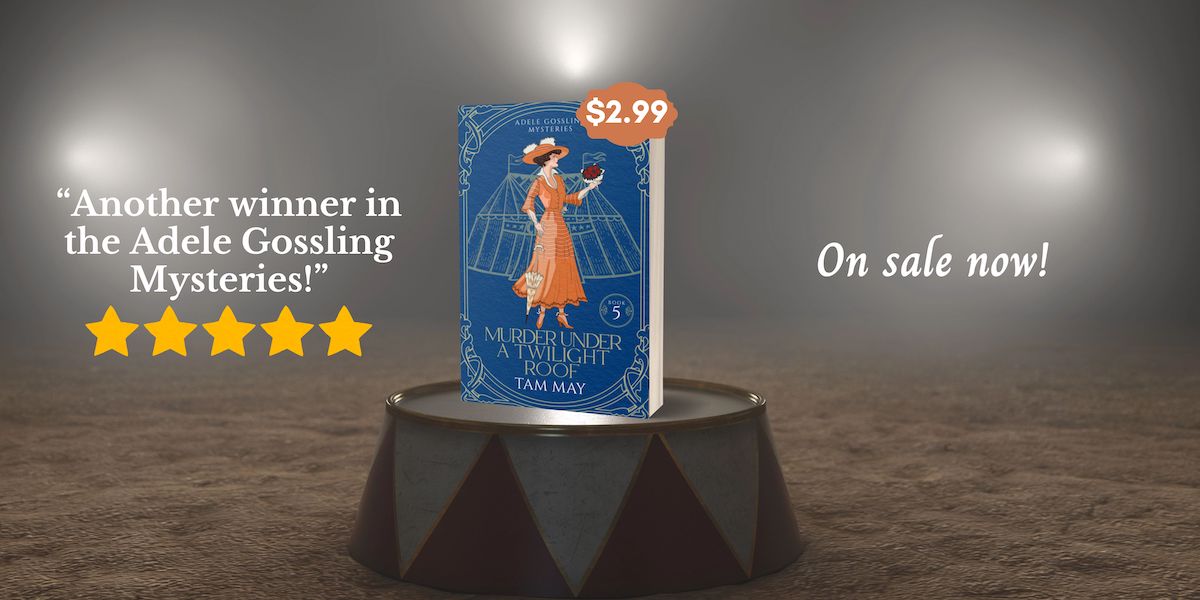I love books and films that are “inspired by true events”. I actually like these better than biopics or fiction that tries to portray the life of a real-life person based on historical evidence. Stories inspired by true events are about creating another story that readers know isn’t supposed to be true but is inspired by the truth.
This is why I chose to write Book 6 of my Adele Gossling Mysteries inspired by true events from a real live unsolved mystery. The story of Hazel Drew took me in for several reasons. The murder happened in 1908, around the time frame of the Adele Gossling Mysteries. Modern life was starting to hit America in the face and the Progressive Era brought about many positive changes in the nation. Unsolved cases always intrigue me, and this one remains unsolved, though there are several theories about who could have killed Hazel Drew and why. After doing more research, I discovered the murder of Hazel Drew inspired another creative work that went on to become a cult classic in the 1990s: The hit series Twin Peaks.
Hazel Drew was, in many ways, one of the era’s modern women. She was a working girl who wasn’t confined to the ideals of the separate spheres. Rather than being conventional and restrained by her womanhood, she was not ashamed of going out and having a little fun and using what money she had to buy elegant things. There is evidence she wanted to move beyond her position as a domestic servant (something Victorian era ideology, with its rigid social definitions, wouldn’t have allowed), though what that would have looked like, no one knew. And, like many New Women of the day, she was an enigma.
Here lies the most fascinating aspect of this case. Hazel Drew presented herself as one thing but, digging into her life after she was murdered, police found evidence of a hidden self. Interviews with family members and friends reveal they observed Hazel didn’t have a beau and didn’t seem much interested in men. But in a suitcase she left at the train station on the day of her death, police found dozens of letters from men (most of them unidentified) who professed undying love and devotion to Hazel. These letters painted a picture not of the modest, church-going young woman most Sand Lake residents had known, but a vivacious, bubbly girl who loved expensive trinkets and fancy restaurants and sojourns to New York City, none of which were exactly within a domestic servant’s budget. Many in her more conservative and backward hometown thought her “too big for her britches” – owning jewelry and clothes her maid’s salary could ill afford and working for some of the most prominent families in town, including the city treasurer and a prominent businessman.

Photo Image: Postcard of Sand Lake, NY, where Hazel Drew lived and worked and was killed, 1910, eBay store: Amg37/Wikimedia Commons/PD US
Why, then, was she found face-down in Teal’s Pond one summer night in 1908, dead from a blow to the back of the head, her face so mangled from being in the water that only her dental records could identify her? Who might have had it in for this maid (another disposable working girl, which I talk about here)? And why, after months of searching for the killer, did the local police simply give up where the case remains unsolved today?
These are questions still left unanswered in the Hazel Drew murder case. But they are questions Adele and her friends answer about the case of Arabella Parnell in The Case of the Dead Domestic. The book celebrates its 1-year publiversary this month and is on sale now! Get all the information and buy links here.
If you love fun, engaging mysteries set in the past, you’ll enjoy The Missing Ruby Necklace! It’s available exclusively to newsletter subscribers here. By signing up, you’ll also get news about upcoming releases, fun facts about women’s history, classic true-crime tidbits, and more!



